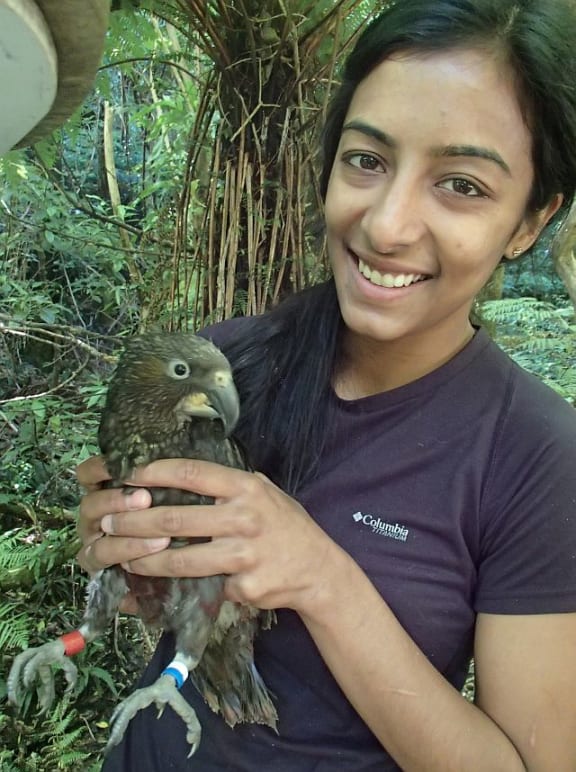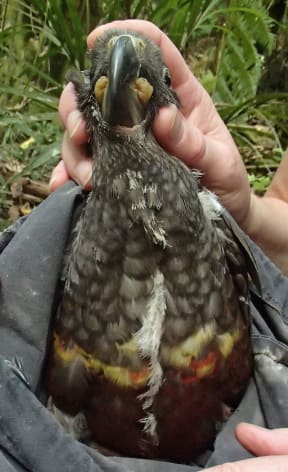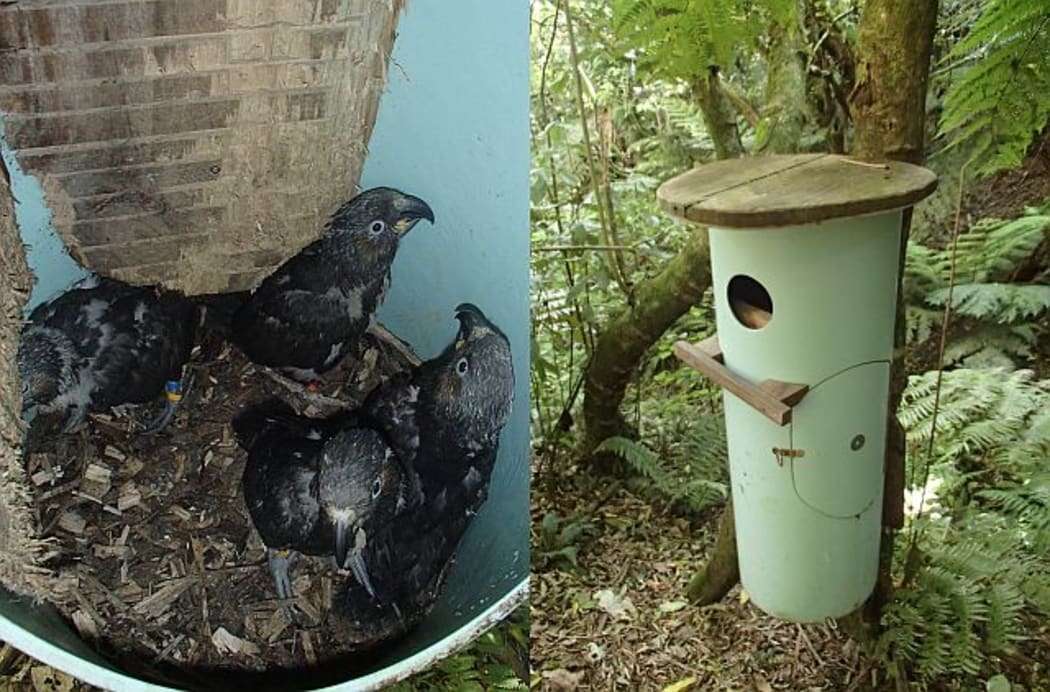By Alison Ballance

Aditi Sriram, pictured here with a kaka chick, is a vet who is studying and working towards a Massey University Master's degree as a wildlife vet. Photo: RNZ / Alison Ballance
Following the successful introduction of kaka to Zealandia Sanctuary in 2002, Wellington city is now home to hundreds of these curious forest parrots. Unfortunately their inquisitive nature around houses has seen quite a few sick birds admitted to the Wellington Zoo hospital, The Nest, with quite high levels of lead in their blood. The source is probably lead roofing nails, lead flashing on roofs and lead paint on old houses, and the problem arises because lead tastes sweet, and being parrots, kaka are inquisitive by nature and keen on chewing things.
Massey University and Wildbase Hospital wildlife vet student Aditi Sriram is keen to find out when kaka start being exposed to lead, and she suspects it might begin before the chick even hatches.
“Lead would affect chicks much more adversely [than adults] if they were exposed at a young age,” says Aditi. “So we’re trying to work out how chicks get exposed. Is it from their parents feeding them? Or is it vertically transmitted through the egg – the mum deposits lead in the egg shell which is then absorbed by the chick.”
Zealandia volunteers have collected egg shells from Aditi’s study nests, and these are being tested to see if they contained lead. Aditi has then tested the chicks twice, at the age of 15-20 days and again at 45-50 days, to see if the amount of lead in their blood is increasing over time, which would indicate they are being fed food that contains some lead. At the same time she carried out a number of trials to measure their body condition (their size and weight for their age) and test their muscular strength, balance and co-ordination, to see how this related to their lead levels, as there is evidence that chicks exposed to high levels of lead at an early age may be smaller or developmentally impaired.

Distinctive yellow wattles around the gape of the beak and the yellow nostrils identify this as a young kaka. The yellow disappears as the kaka ages. The band of yellow feathers on its breast is a special feature of kaka chicks at Zealandia Sanctuary. Photo: RNZ / Alison Ballance
Although she hasn’t done much analysis yet Aditi reports that chicks from all but four of her study nests had various levels of lead in their blood.
“We found what we consider to be higher lead levels than normal,” she says, “But as yet we haven’t seen any obvious clinical symptons.”
She has also collected feathers, as there is some evidence that birds get rid of toxins from their body into products such as feathers and egg shell.
The next step of the study will be to test the lead levels of healthy adults in the wild, to compare the amount of lead they carry to the sick birds coming into the zoo. Aditi says we do not yet know how much lead a bird can tolerate before it becomes toxic.
Kaka are not the only New Zealand native bird to have issues with lead. The kea, a close relative of the kaka, also suffers from lead poisoning, and some work has also been done measuring lead levels in takahe.
In humans, lead interferes with the development of the nervous system. It is very toxic to children, causing potentially permanent learning and behaviour disorders.
In this Our Changing World story, Alison Ballance finds out about the damage that kaka are causing to trees in Wellington parks and gardens.

A family of four kaka chicks, aged about 45 days, at home inside a Zealandia Sanctuary nest box made from a piece of industrial pipe. Photo: RNZ / Alison Ballance
Video: Kaka chick co-ordination test
Wildlife vet Aditi Sriram checks the motor co-ordination of a young kaka chick with a ‘righting test” – putting the kaka chick into an unnatural position on its back, and timing to see how quickly it rights itself (in this case, very speedily!)
Listen to the story about lead poisoning in urban kaka below:

